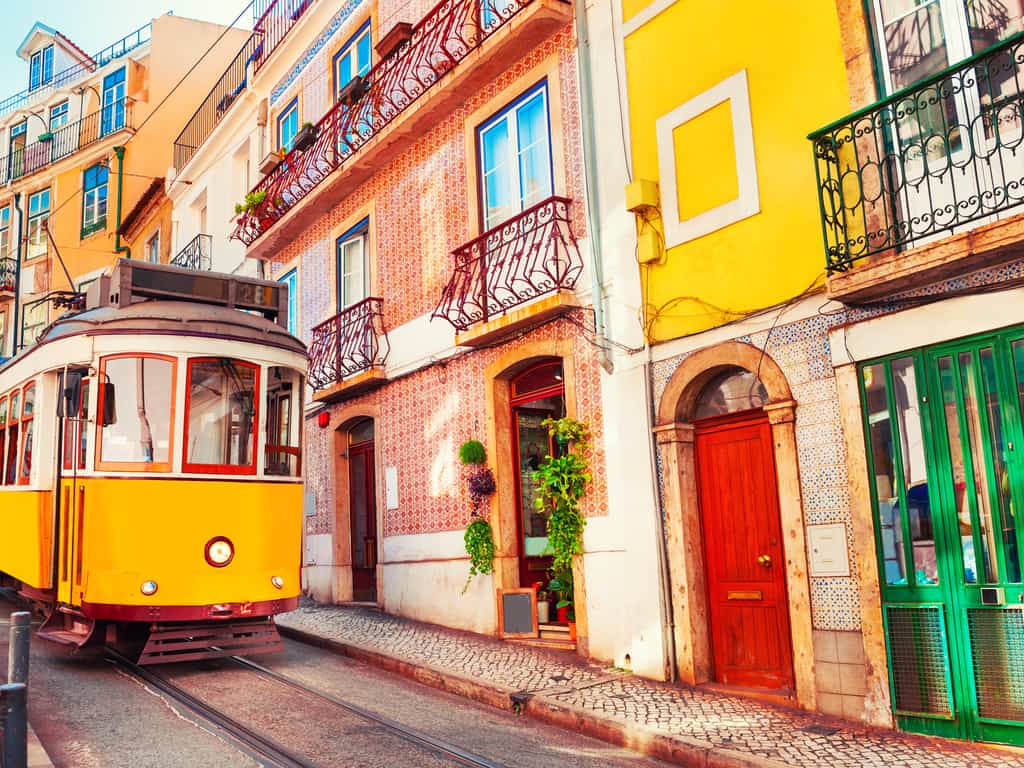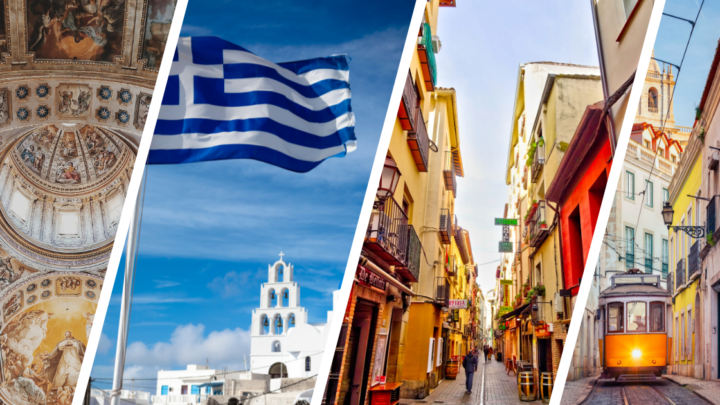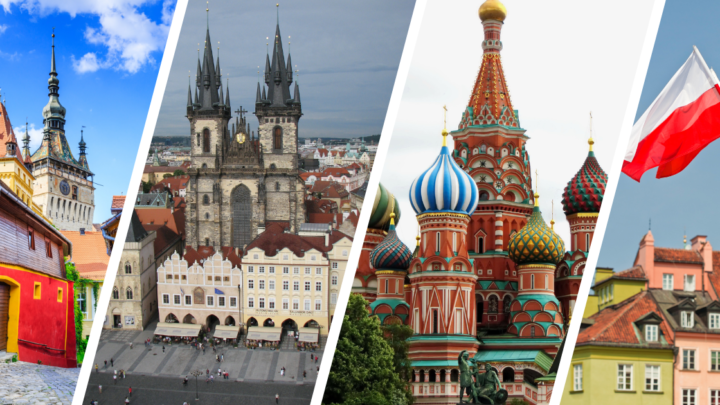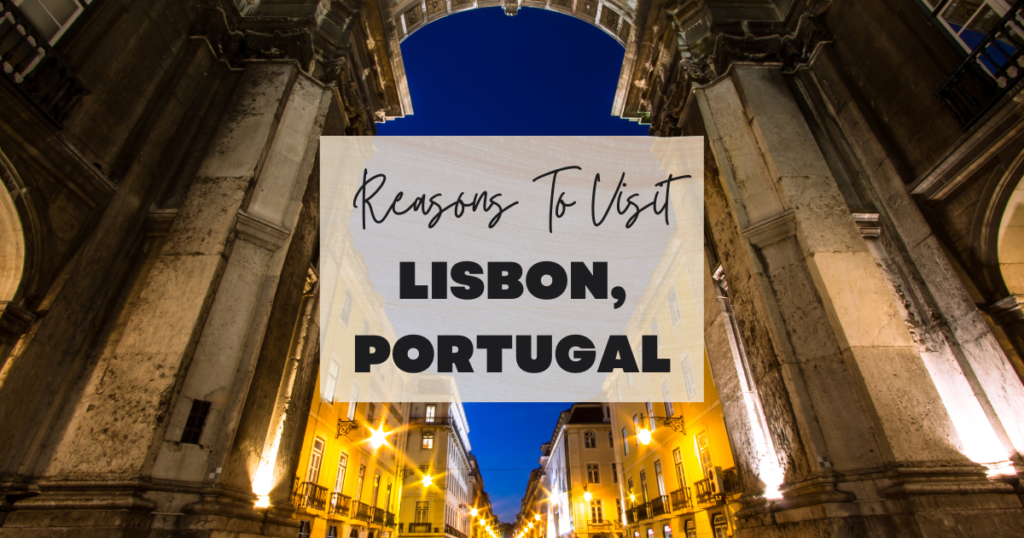With the help of our travel guides, organizing a trip to Lisbon, Portugal, is a breeze. For the best travel experience in Lisbon, Portugal, check out our curated list of things to do in Lisbon, Portugal, and the best places to visit in Lisbon, Portugal, below. Wondrous Drifter is a Web 3.0 travel startup with ambitious goals to change the world.
Table Of Content
- Aqueduto das Aguas Livres
- Basilica de Estrela
- Belem Tower
- Berardo Collection Museum
- Bota Sal
- Carmo Convent
- Cervejaria Ramiro
- Feira da Ladra
- Jeronimos Monastery
- Mercado da Ribeira
- Monsanto Forest Park
- Museu Calouste Gulbenkian
- Museu do Oriente
- Museu Nacional do Azulejo
- National Museum of Ancient Art
- Oceanario de Lisboa
- Padrão dos Descobrimentos
- Pavilion of Knowledge
- St. George’s Castle
- Tram 28
- Explore Europe
Aqueduto das Aguas Livres
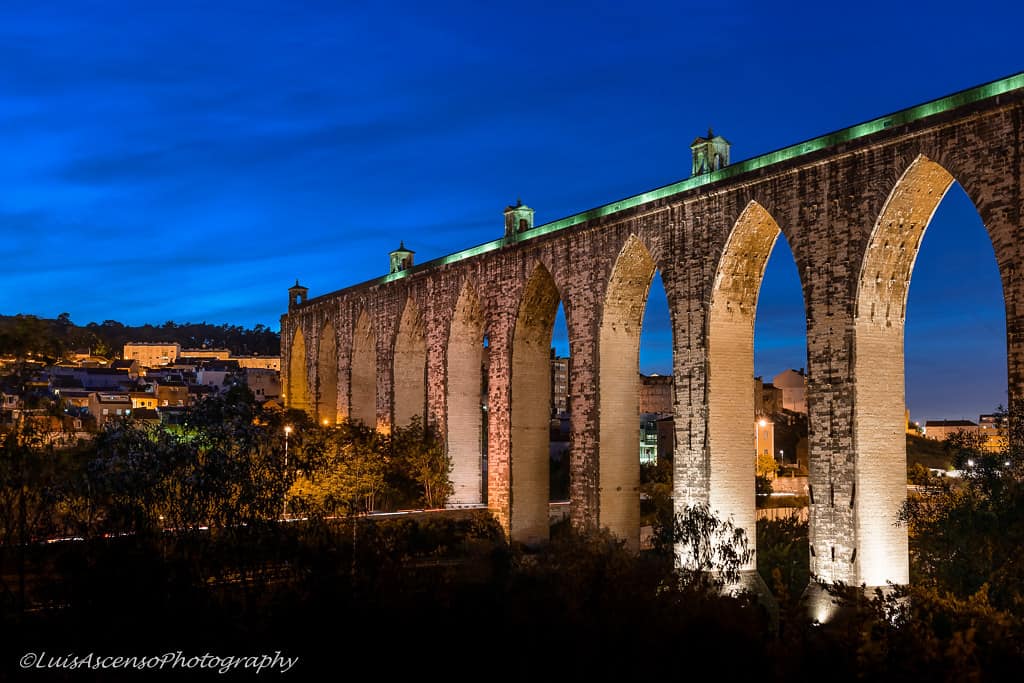
A large stone arch that is surrounded by vegetation.
The Aqueduto das Aguas Livres is an important engineering project from the 18th century built to bring water to Lisbon.
Dom Joo V had this aqueduct built between 1731 and 1799, giving Lisbon its first clean water to drink.
Combined with other secondary distribution aqueducts, it was part of a network that supplied the city with water over 59 kilometers.
There are 35 arches in the section that spans the Alcântara valley, including the world’s highest stone arch, which is 65 meters high and 32 meters wide.
It has 21 round and 14 pointed arches, the largest of which is 65 meters high and 29 meters wide, making it the largest in the world.
Explore the massive stone aqueduct that runs through Lisbon and has been an essential component in the city’s growth.
Address: CC da Quintinha 6, 1070-225 Lisboa, Portugal
Basilica de Estrela
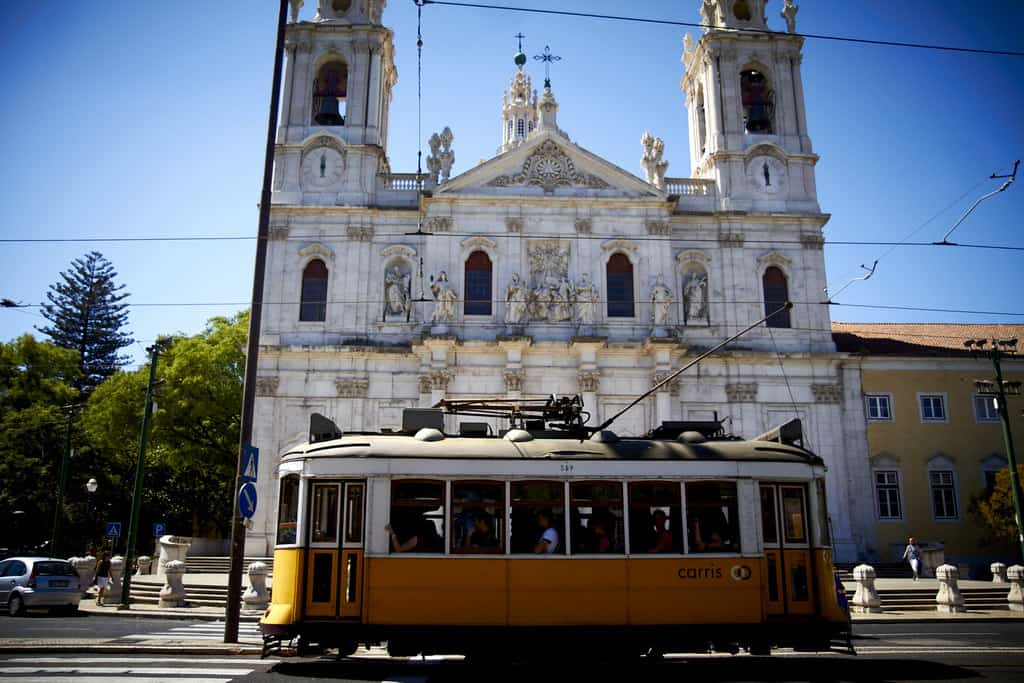
What awaits you if you climb 114 steps? This is one of the most impressive buildings in Lisbon.
The Basilica de Estrela is a huge neoclassical building with a huge rococo dome and twin bell towers decorated with statues of saints and other figures.
In 1790, Queen Maria I constructed the baroque and neoclassical structures known as the Royal Basilica of Estrela as an expression of her gratitude when her son was born.
The interior is adorned with marble in every color, and it houses both the magnificent tomb of the late queen and a one-of-a-kind nativity scene that is made up of 500 pieces each of cork and terracotta.
On the site of the queen’s tomb in Brazil, you’ll also see a magnificent baroque nativity scene made of clay and cork, including all over 500 pictures.
Take a breath and climb 114 steps to be able to reach the terrace where you can see the dome up close and see other attractions like the castle, Amoreiras towers, and more.
Address: Praça da Estrela, 1200-667 Lisboa, Portugal
Belem Tower
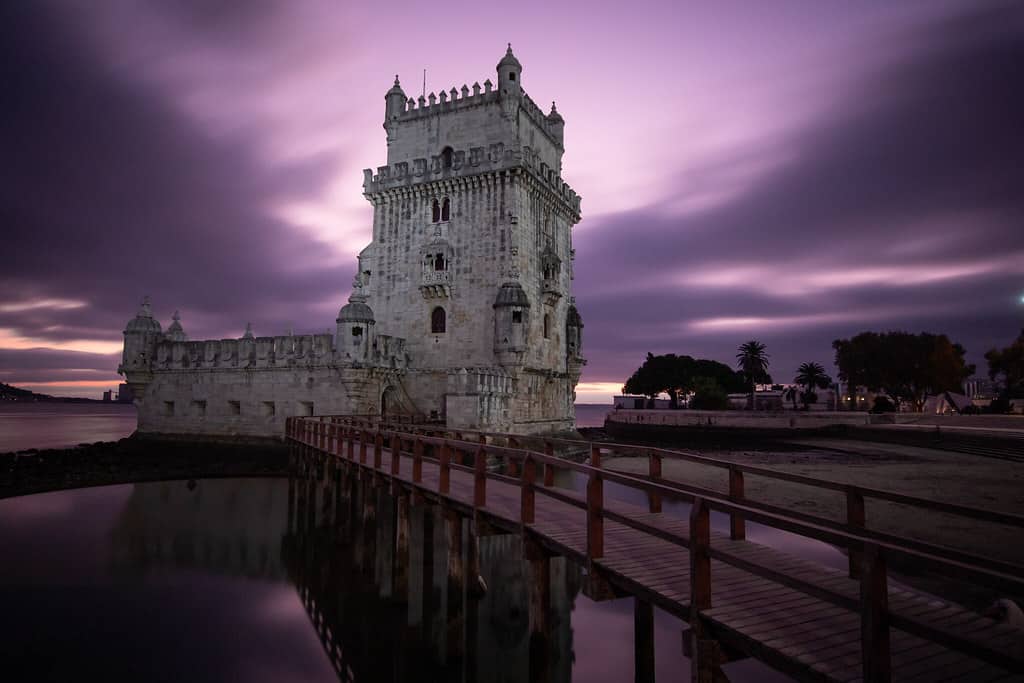
Soaring from above, watching you below.
To protect Lisbon from potential incursions and assaults from across the Tagus River, the Belém Tower was originally designed to function as a gateway to the city. However, over time, it was also transformed into a lighthouse and a customs center.
A Portuguese architect and sculptor, Francisco de Arruda, designed and built the Belém Tower between 1514 and 1520 in the Manuelino style.
This Monument has 16 windows with cannons on the ground floor. Full of holes, and it’s where the prisoners were located.
Each story is connected by a small, narrow spiral staircase, which can be described as an overwhelming experience on the busiest days when you have to wait your turn to climb.
It is a big part of who the Portuguese are and a symbol of a country whose history has been molded by its closeness to the ocean and discoveries of new worlds by sea.
Visit one of the main highlights of Lisbon, where the view from afar is already captivating.
Address: Av. Brasília, 1400-038 Lisboa, Portugal
Berardo Collection Museum

Explore the best-known collections that Berardo has to offer.
The Museu Coleco Berardo in Lisbon is a place of interest for museum-goers, and there are three shows to see.
José Manuel Rodrigues Berardo is a businessman and philanthropist who has made a billion dollars. He owns all of the contemporary arts on display.
This museum has works by artists from all over the world that show a wide range of cultures and ways of expressing themselves.
There’s only enough room to show 900 of Berardo’s works by much more than 500 artists solely on a single floor. They come from the Land Art, Minimalism, Conceptualism, and Arte Povera movement patterns. They include pieces by Anish Kapoor, Donald Judd, and Sol LeWitt.
Picasso’s “Femme dans un Fauteuil,” worth more than 18 million euros right now, and Roy Lichtenstein’s “Interior With Restful Paintings” are two of the museum’s most valuable pieces.
Pay Berardo a visit and learn about what inspires him to do art.
Address: Praça do Império, 1449-003 Lisboa, Portugal
Bota Sal
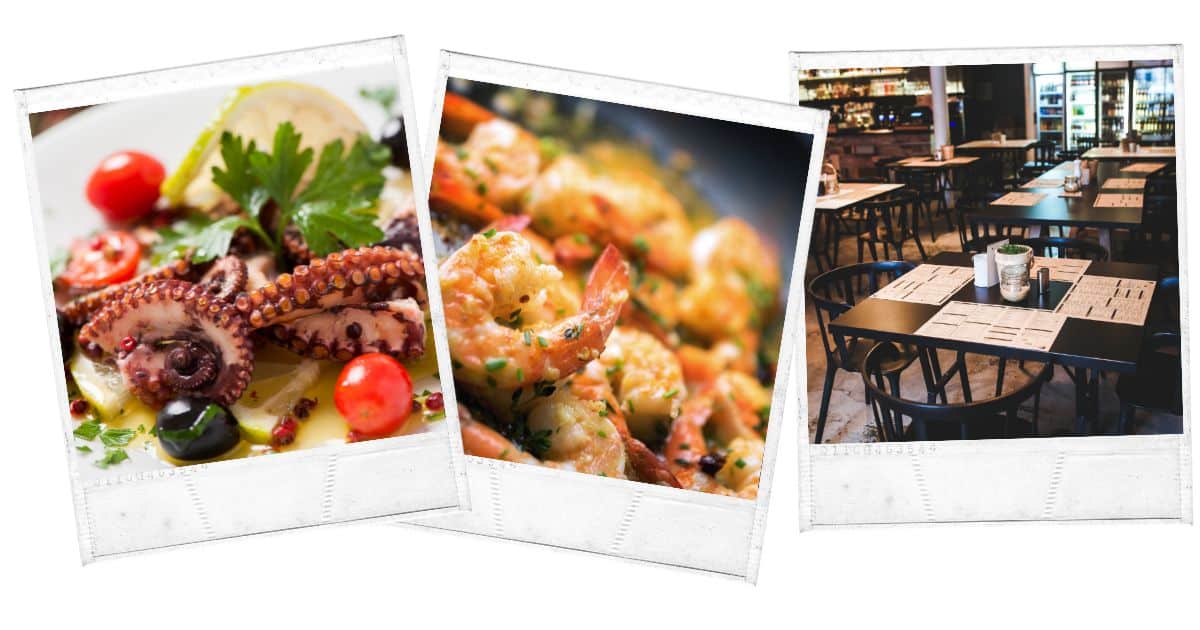
The welcoming atmosphere allows visitors to unwind and enjoy themselves.
Bota Sal is an offshoot restaurant in the Estrela neighborhood of Lisbon that was created by the same people responsible for the popular seaside Sal Restaurante in Comporta.
If you feel hungry while on a walking tour in St. George, this restaurant is one of the best dining places to grab a bite.
The fish soup, tuna, and paua at Bota Sal are all mouth-wateringly delicious. Many locals are under the impression that this location is home to some of the best chocolate fudge, creme caramel, and gateau in the area.
There’s an octopus salad, rose shrimp, and cuttlefish with bacon strips for you to taste.
This location will make you feel more at ease than other options due to its high-quality service and pleasant atmosphere.
Your meal will be enhanced by delicious wine, and you will want to come back again and again.
Address: R. Domingos Sequeira 38, 1250-096 Lisboa, Portugal
Carmo Convent
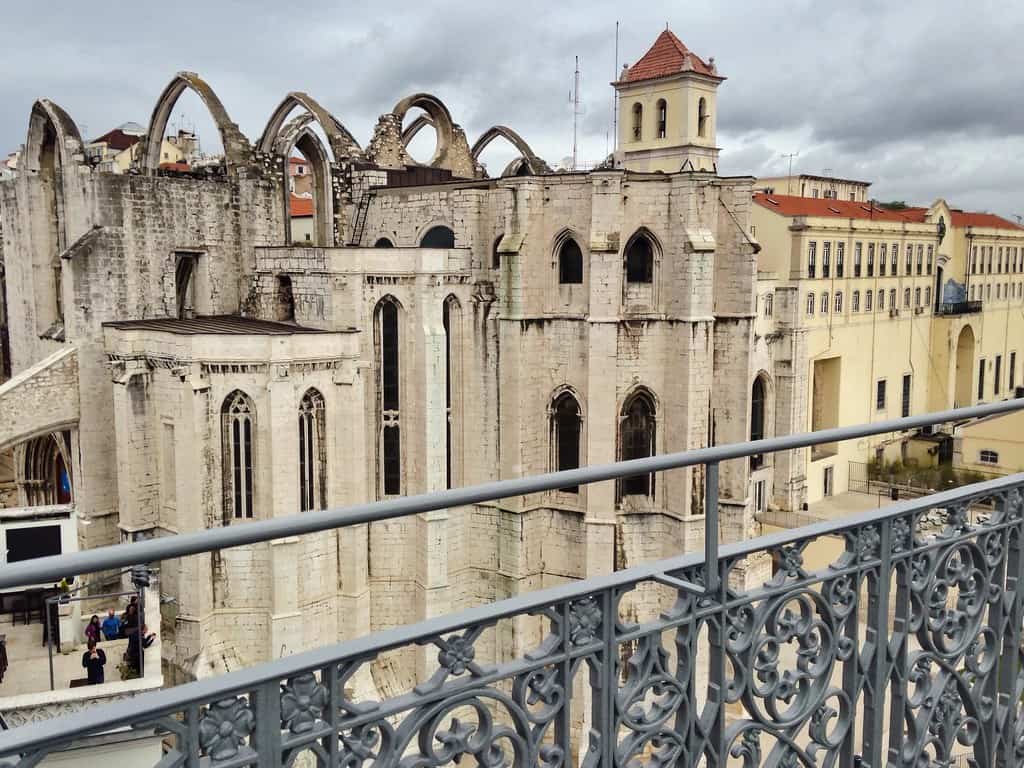
A reminder of the 1755 devastation caused by the earthquake.
The Carmo Convent was one of the few structures to survive relatively intact. The fact that the Carmo Convent was one of the few structures to survive relatively intact is an impressive accomplishment.
It was Lisbon’s largest church at the time of the earthquake. Still, today all that remains of the arches and rubble that caved in on the congregation during mass is the roofless nave open to the sky.
Its roof collapsed on the congregation during Mass on All Saints’ Day, and it was never rebuilt, but the Gothic arches have been preserved.
A small archaeological museum houses an eclectic collection of tombs, ceramics, sculptures, and mosaics in what used to be the main altar.
Much of the art in the convent miraculously survived the earthquake and was distributed among the city’s churches.
Even though it hasn’t been rebuilt to its pre-earthquake state, the significance is still there!
Pay a visit to one of the tourist destinations that has triumphed over a terrible challenge in recent years.
Address: Largo do Carmo, 1200-092 Lisboa, Portugal
Cervejaria Ramiro
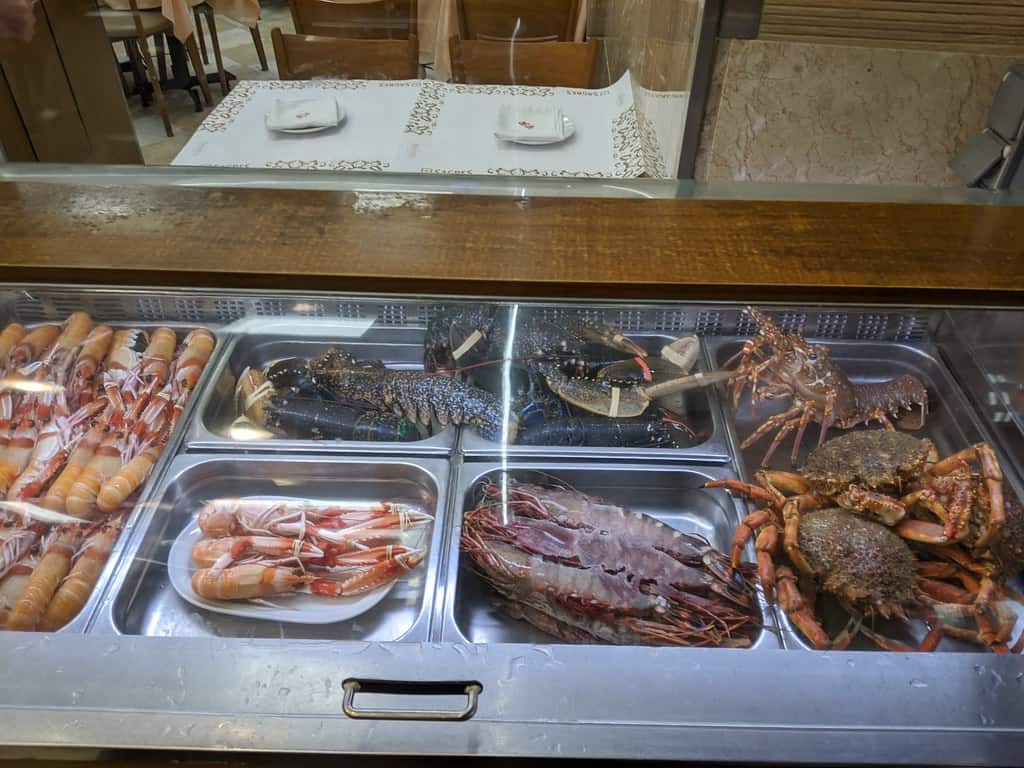
Prepare yourself for a paradise filled with seafood!
This restaurant is run by a family and is known for its welcoming but humble atmosphere, which is perfect for enjoying some of the city’s most delicious seafood.
Cervejaria Ramiro was started as a small pasture house in 1956 by Mr. Ramiro’s father. He played a key role in the company and gradually introduced seafood as the years passed, making it a boom where seafood restaurants were born.
Because mariscos are this establishment’s specialty, you should prepare to make a mess. All of the seafood is cooked and sold by kilogram. This includes prawns, lobster, and crab.
Eat them with your bare hands to make eating more comfortable and get a better taste of the juices each type of seafood offers.
To avoid waiting in a lengthy line, you should get there as early as possible or make a reservation.
Address: Av. Alm. Reis 1 H, 1150-007 Lisboa, Portugal
Feira da Ladra
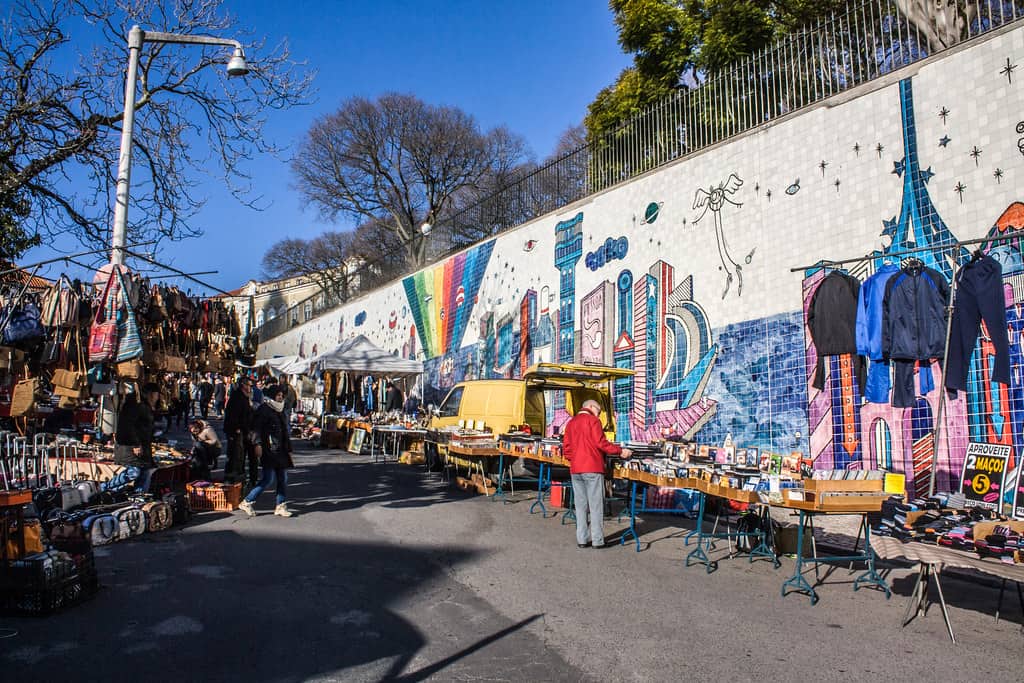
When you go on vacation, you must indulge in some souvenir shopping!
Did you know people consistently refer to it as “Thieves Market” when they misheard its name? Because the word “ladra” can be translated as “female thief,” but its original meaning was “flea,” which can be found in antiques.
It is an open-air market that has a little bit of everything.
The first market was held in 1272, but it moved around the city for a while before settling down in this location.
Between the souvenirs and the deals, this spot could end up being the one that leaves you with the most vivid recollection of your time in Lisbon.
The majority of the vendors sell antique items, while others sell new items or souvenirs.
Items that have been handcrafted by artisans, books, clothing, antiques, and even military relics and furniture are all on display, so there is still a chance to get a good deal.
Walk around to each booth, and once you’ve found everything you need, make sure to get it all!
Address: Campo de Santa Clara, 1100-472 Lisboa, Portugal
Jeronimos Monastery
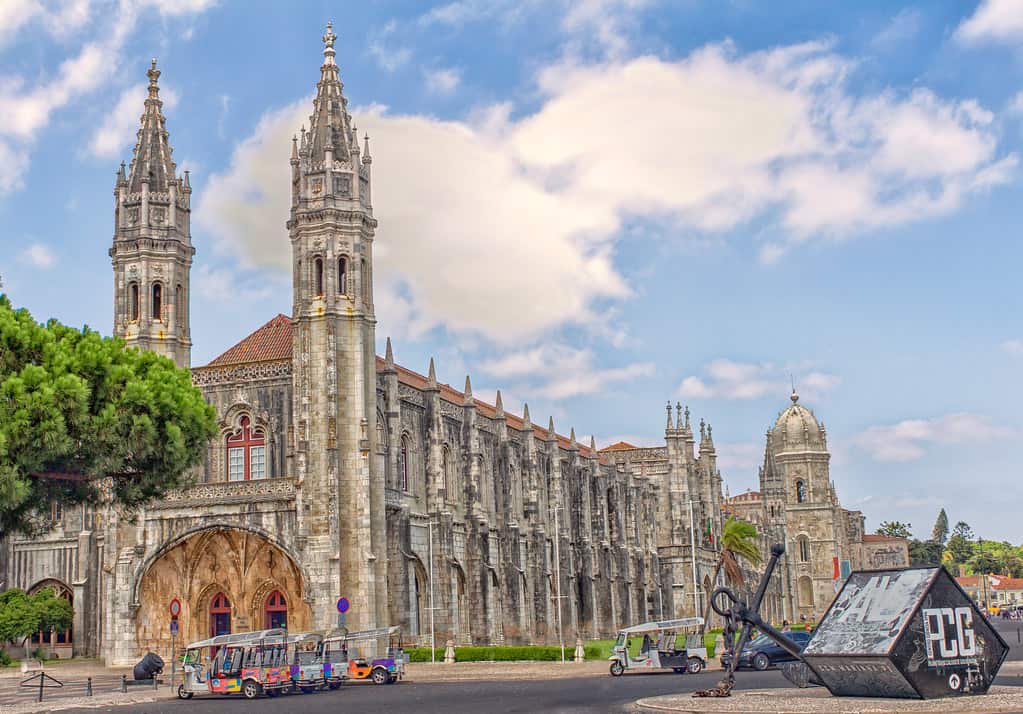
Pay the magnificent monastery a quick visit during your trip.
The monastery at Jerónimos is also referred to as the Hieronymite Monastery. It is a religious building that Diogo de Boitaca made to remember when Vasco returned from India.
During the Age of Discovery, it was widely acknowledged as the most impressive representation of Portugal’s power and wealth.
There is a garden that was designed to be outside the church in 1940, and the interior of the building is large and open, with octagonal piers that are lavishly decorated with reliefs.
Consisting of edges cut in the shape of various Portuguese municipal coats of arms. A large fountain in the center is also decorated with coats of arms.
The garden will lead you to a small park that is surrounded by a row of charming houses that date back to the 16th century. Within these houses are several traditional restaurants that offer to sit outside.
Take a moment to appreciate the breathtaking monastery.
Address: Praça do Império 1400-206 Lisboa, Portugal
Not all those who wander are lost. Time to fly and travel. Experience different cultures around the world by checking out the travel around the world guide. The USA has to be on your bucket list when you wander around the world. America is home to some of the most impressive and interesting museums that you will find nowhere else in the world. Discover the top states in USA to visit.
Mercado da Ribeira
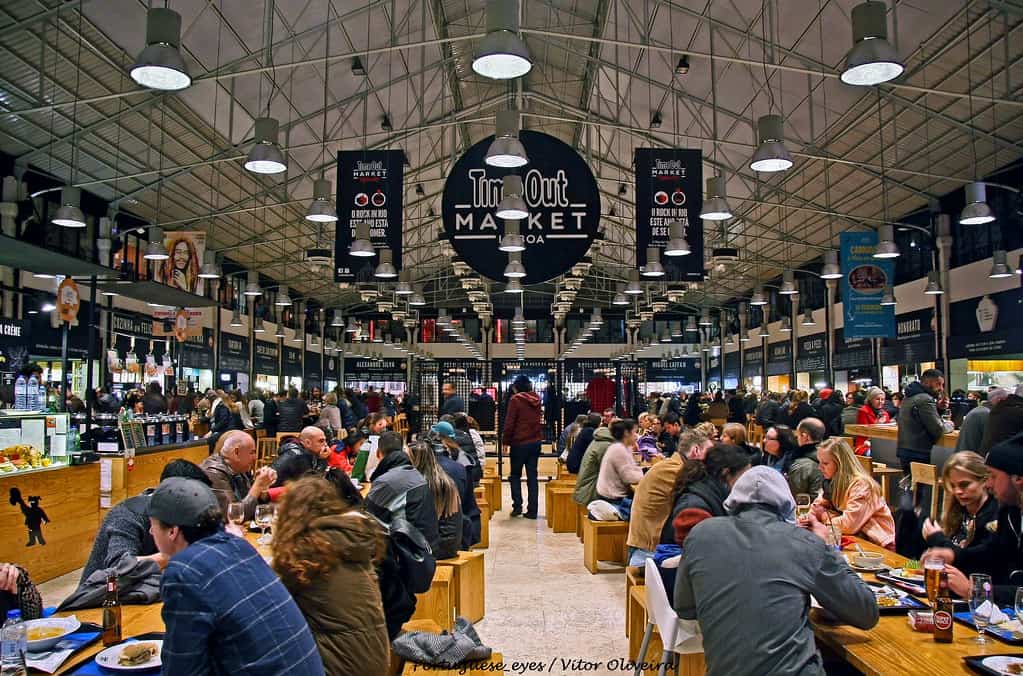
In this historic market, you can get a taste of the regional cuisine.
It was originally known as Mercado 24 de Julho when it first opened in 1892, but it was renamed Mercado da Ribeira for much of the twentieth century.
An enormous oriental dome with an iron interior has served as the primary market in Lisbon.
The food hall takes on the appearance of a canteen with its communal seating and tables. Making it a well-known location among people who are interested in dining.
The market features a wide variety of delicacies, including seafood, steak, sushi, hamburgers, and ice cream, amongst other options. In addition, there are booths where renowned chefs offer their take on regional specialties.
With a total of 30 food stalls and 8 drinking counters with a seating capacity of 750, you will surely have various items to choose from.
Aside from being a market, this place also hosts special events.
Create a mouthwatering dish by choosing the best combination of meals!
Address: Av. 24 de Julho 49, 1200-479 Lisboa, Portugal
Monsanto Forest Park

“Lisbon’s Lungs”
It was referred to as the “lungs of the city” because it helps replenish oxygen levels and is beneficial to the health of a large number of city residents.
It offers you a variety of attractions and activities to do, ranging from bird-watching to remote-controlled cars, all within a short distance from the city.
The Monsanto Forest Park is a large protected forest area west of Lisbon that serves as a welcome escape from the city’s traffic and crowds.
The park has 900 hectares of greenery crisscrossed by cycle paths, is equipped with viewing points to admire the Tagus estuary, and is home to a varied range of wildlife such as rabbits, squirrels, owls, and other species.
The forest trails are popular for walkers, runners, and cyclists. There are also children’s play areas for your little ones, picnic areas for hanging out, and other amenities to enjoy.
Enjoy the fresh air while avoiding the crowded city. Take some of your time for yourself to unwind and enjoy the outdoors.
Address: Monsanto Hills, Lisbon, Portugal
Museu Calouste Gulbenkian
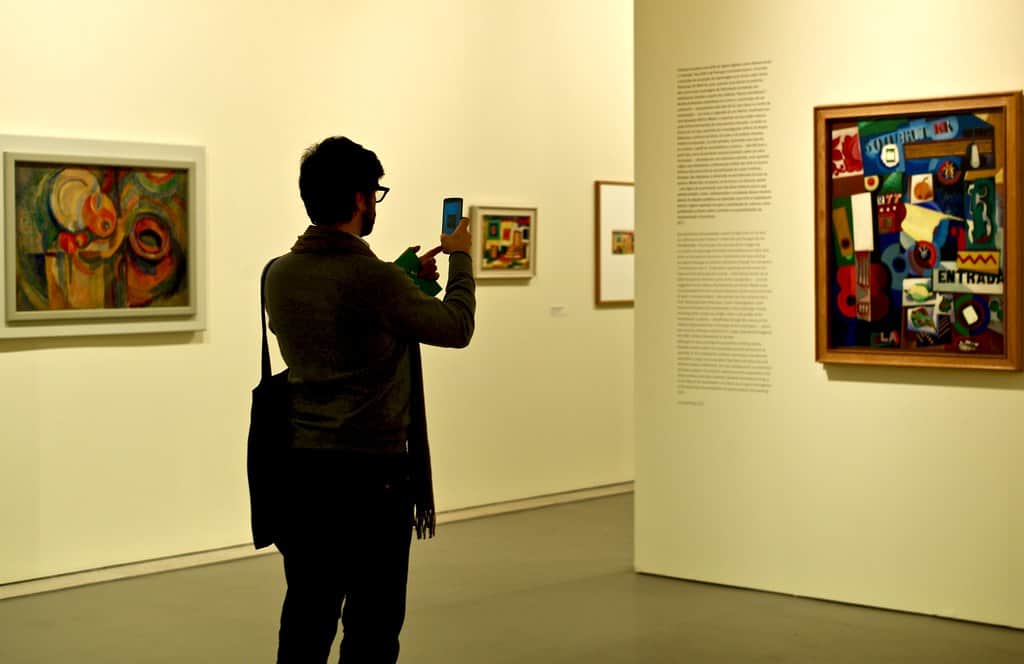
What kind of collections do they have in this museum?
An undiscovered jewel in Europe, Museu Calouste Gulbenkian is a national treasure.
It houses an exquisite collection of Roman, Egyptian, Greek, Asian, Islamic, and European arts.
The foundation’s modern collection dates back to its early days, but it was first shown in 1983. It features various drawings, paintings, prints, sculptures, and photography by Portuguese artists from the twentieth and twenty-first centuries.
Did you know that Calouste Gulbenkian gave the country all of his valuable works of art?
He is an oil magnate and one of the richest people of the last century. He has been collecting art for more than 40 years.
In the Egyptian section, you’ll discover bronze cats, a gold Egyptian mummy mask, and other valuable relics.
Moreover, there are stunning collections of Hellenic coins, a 2400-year-old Attic vase, and rare pieces of Chinese porcelain are some of the highlights of the museum.
There are many collections you should see, so get your bag ready and go to this museum right away.
Address: Av. de Berna 45A, 1067-001 Lisboa, Portugal
Museu do Oriente
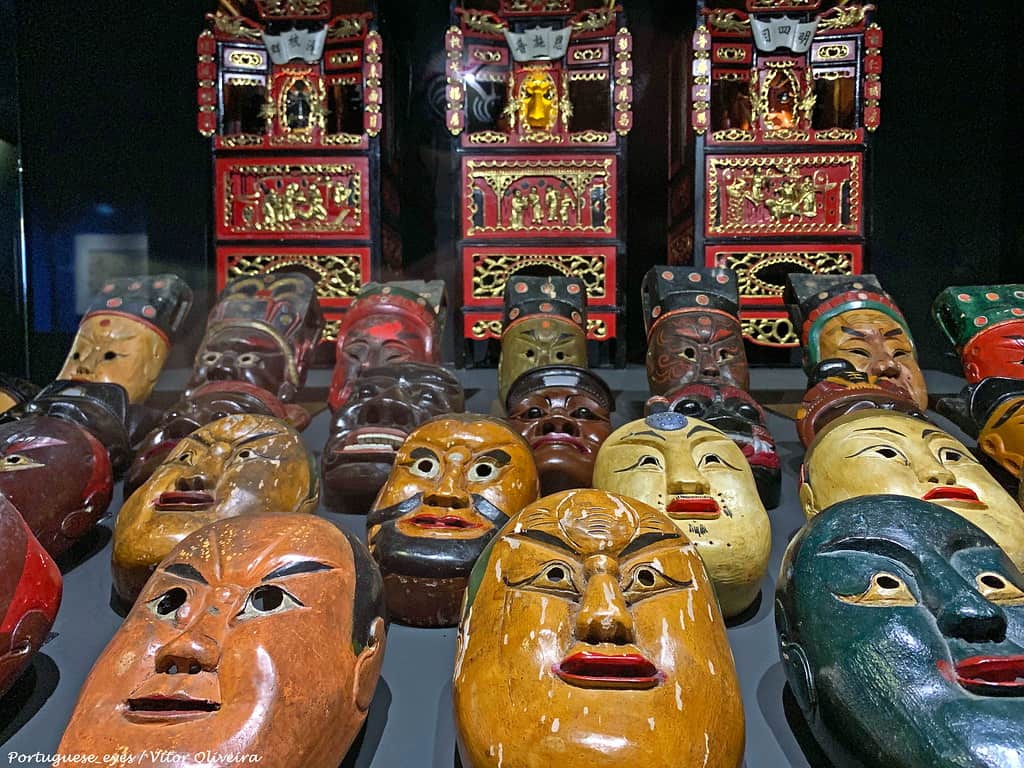
To a new museum, a brand-new discovery is made.
Fundaco Oriente owned the Museu do Oriente. It is one of the many museums in Europe that show how the cultures of the East and West got along with each other.
At the museum, two major shows stay up all the time. There is an exhibit on the first floor called “Portuguese Presence in Asia.” It comprises artworks and historical documents that the Oriente Foundation has collected over the years.
The first floor includes Chinese and Japanese screens from the 17th and 18th centuries, Namban, a porcelain collection bearing the Companhia das ndias coat of arms, and a collection dedicated to the cultures of the Timorese people.
On the second floor, the “Gods of Asia” exhibit is based on the Kwok On collection, which has more than 13,000 items.
As people walk through the exhibition, they will see masks, puppets, ritual objects, lanterns, paintings, games, statues, and more from the performing arts and other fields.
You may know a lot of things, but when you see them in person, they feel different. So, what are you waiting for? Go now!
Address: Doca de Alcantara Norte, Av. Brasília, 1350-352 Lisboa, Portugal
Museu Nacional do Azulejo
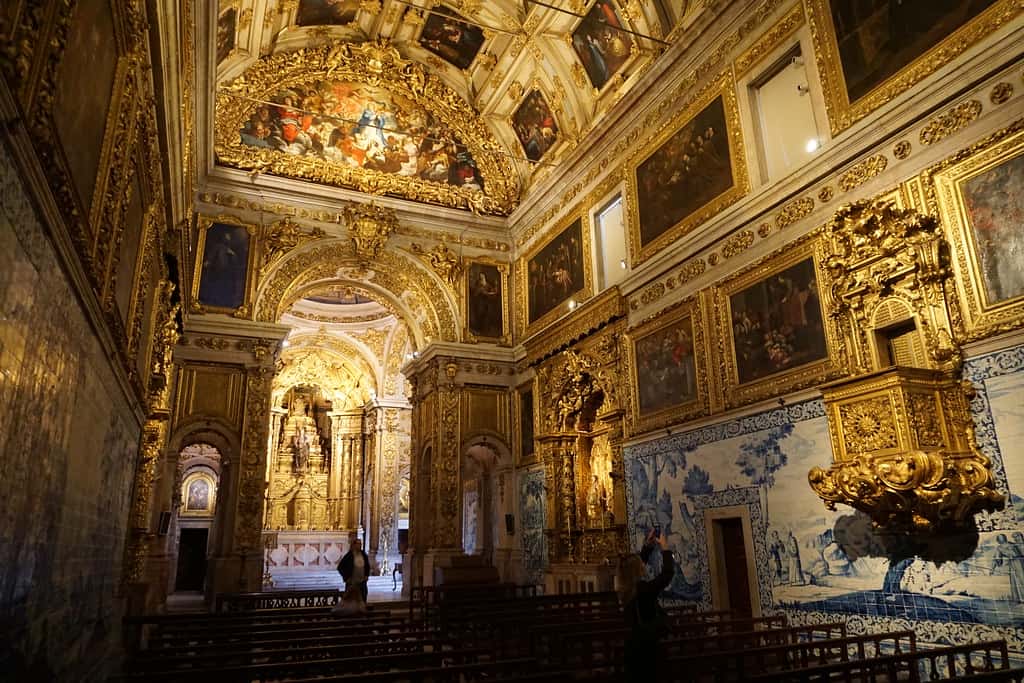
A story from ceramic tiles
The museum is located in the Madre de Deus Convent, which was established in 1509. Through the museum’s collections, visitors can learn about the history of tiles from the 15th century to the present day.
The inside is decorated in style called “Portuguese baroque,” which is made up of paintings, tile panels, and carved and gilded wood.
The vibrant ceramic tiles are one of the most noticeable features of Lisbon’s alluring architecture. During a walk around town, you might see Portuguese tiles, called azulejos, adorning buildings.
The museum is brimming with tiles of various colors and sizes. Some are simple, with single tiles decorated with flowers or sailboats, while others are pieced together to create grand murals.
The history and development of art in Portugal, which uses tiles in the most varied and creative ways in the world.
Check out the different tiles that can be used to make different kinds of decorations. From the earliest pieces to the most recent ones!
Address: R. Me. Deus 4, 1900-312 Lisboa, Portugal
National Museum of Ancient Art
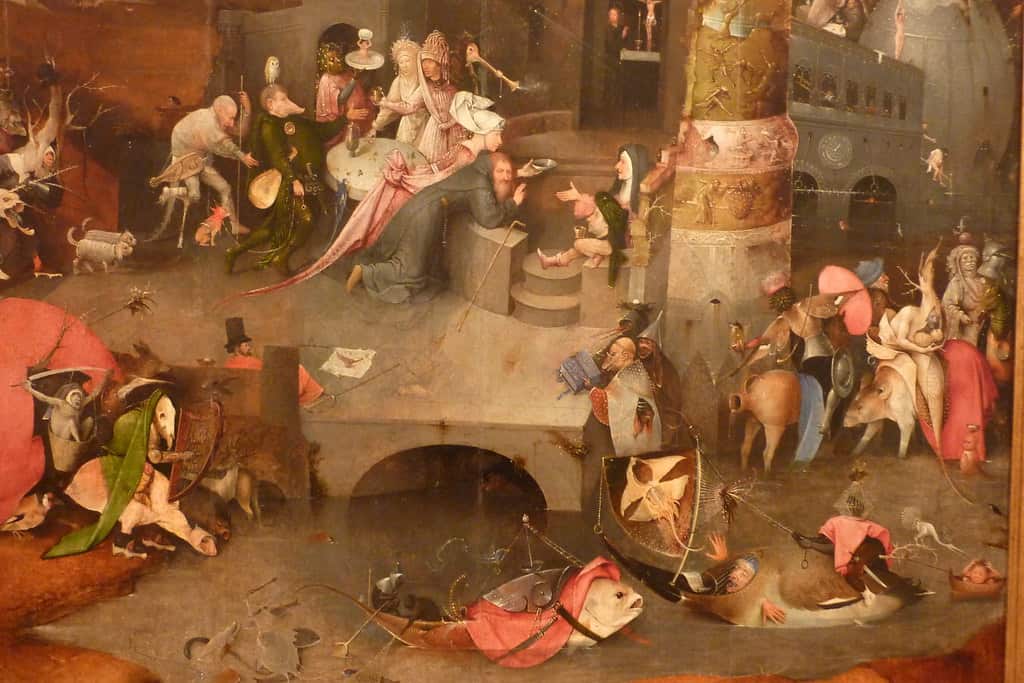
Proceed through the door in the golden facade.
The MNAA was established in 1884, and its placement, the Palácio Alvor, has served as its home for the past 130 years.
The collection contains over 40,000 items, with the greatest number of works designated as “national treasures” by the State.
It is home to the most significant public art collection in all of Portugal, which features sculptures, paintings, silverware, and jewelry sourced from all over the world.
The museum features a stately baroque entryway. Visitors are encouraged to begin their visit on the top floor, which features paintings and sculptures by native Portuguese artists.
This museum establishes accepted norms for good practices. They also have a substantial partnership on a global scale that enables them to work effectively together on displays.
You will have a unique opportunity to learn about Portuguese culture as well as the country’s connections to the rest of the world.
Address: R. das Janelas Verdes, 1249-017 Lisboa, Portugal
Oceanario de Lisboa
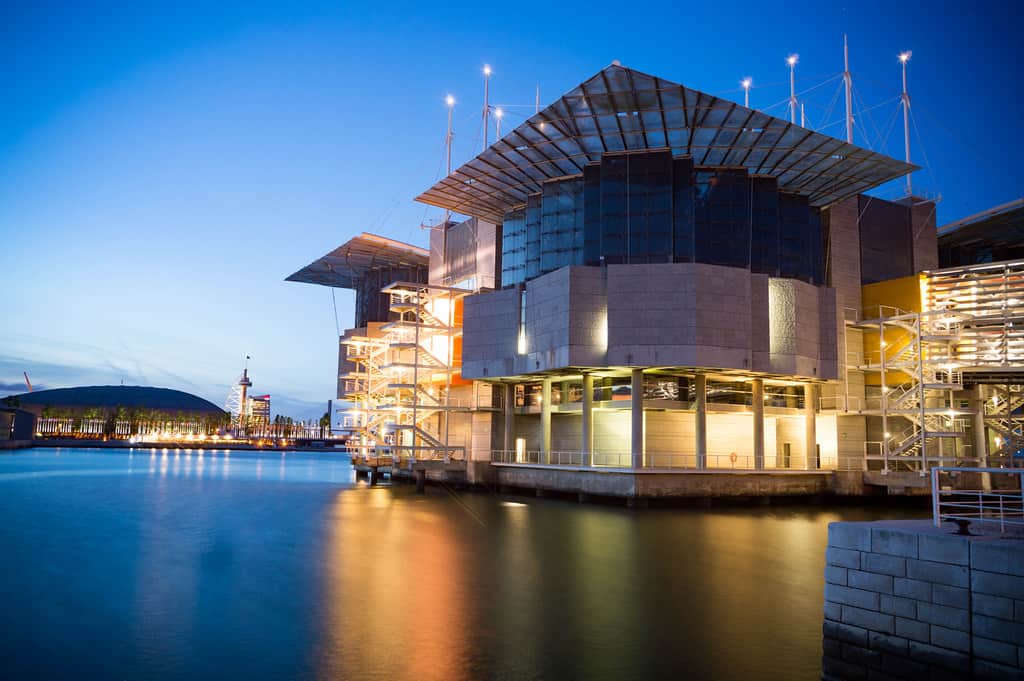
Allow your visit to serve as a link between you and the water.
It was the first aquarium to show all ocean habitats in one single space.
The Oceanário was opened in 1998, making it the centerpiece of the XXth Century’s last World Fair, “The Oceans, a Heritage for the Future.”
The Oceanário was designed with the intention of altering people’s routine behaviors in order to raise public awareness about how vitally important it is to preserve natural resources.
You can learn the facts about the oceans and how to make the right decisions in your daily life to be able to promote environmental conservation while walking through impressive exhibits.
Approximately 25,000 sea creatures appear to be swimming together; invisible acrylic walls separate sharks and defenseless fish.
Round stingrays, seahorses, rare gigantic sunfish, otters, and penguins are among the marine species.
Now is the time to see Peter Chermeyeff’s original structure!
Address: Esplanada Dom Carlos I s/nº, 1990-005 Lisboa, Portugal
Padrão dos Descobrimentos

Discover who these mysterious people are.
Cottinelli Telmo, an architect, and Leopoldo de Almeida, a sculptor, were responsible for the design of the Monument to the Discoveries.
The Monument, which is 52 meters tall, depicts a caravel being followed by a cortege of 32 prominent figures from the time of the Discoveries.
This Monument was constructed using ephemeral materials, featuring a lightweight iron and cement structure that featured plaster and other mixtures as parts.
This dramatic work of art in stone was erected in 1960 in honor of Portugal’s Prince Henry the Navigator. It commemorates Portugal’s many famous explorers and adventurers.
Some of the protagonists of overseas expansion and the culture of the time, warriors, cartographers, navigators, chronicles, colonizers, evangelists, and artists, are portrayed with the symbols that individualize them as a stylized caravel sets out to sea.
Have some time to check out this location! It is a lot of fun to wonder about the historical figures that these symbols are meant to represent.
Address: Av. Brasília, 1400-038 Lisboa, Portugal
Pavilion of Knowledge
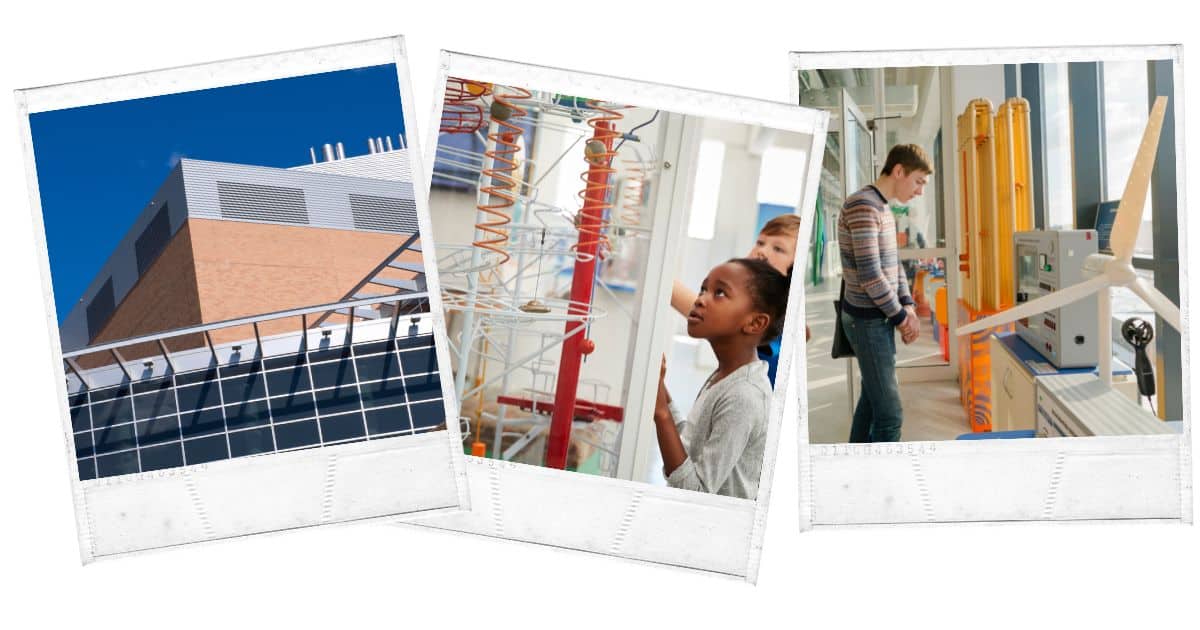
Putting your knowledge to the test at a science museum.
Welcome to the Pavilion of Knowledge, a place where even the youngest visitors will have fun!
It is a hands-on museum of science and technology with the dual goals of fostering a culture of scientific inquiry and enhancing visitors’ understanding of the natural world.
Since it first opened its doors to the public in July of 1999, it has become significantly more interactive.
The exhibitions and activities on offer allow visitors to learn about a variety of topics through interactive exhibits while also relaxing and having fun.
The interactive exhibits at the museum, which are packed with cutting-edge technology and a variety of hands-on experiments, will provide the guests with plenty to do while they are there.
Don’t miss out on the opportunity to draw anything where you see it appear on screen, as well as interact with a robot.
An ideal location for school field trips, where children can gain knowledge from the various exhibits that are on display there!
Address: Largo José Mariano Gago nº1, 1990-073 Lisboa, Portugal
St. George’s Castle
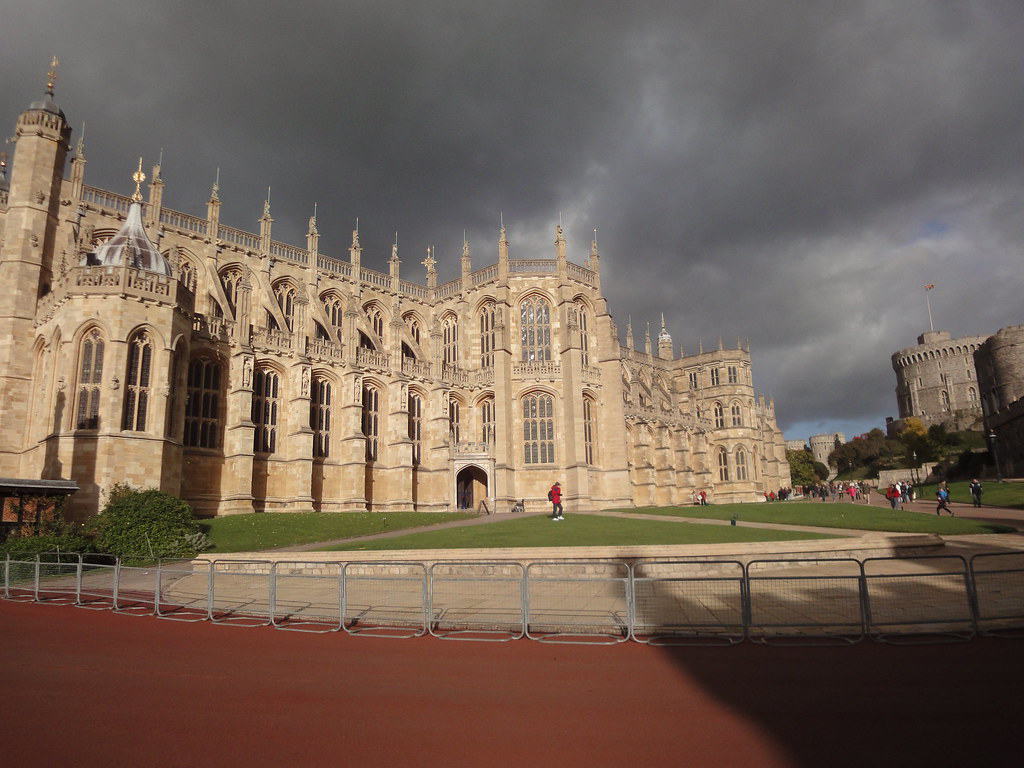
Allow the heritage of Lisbon to enchant you during your vacation.
It’s a peaceful haven where a statue of King Afonso Henriques and a series of cannons in the main gate serve as a reminder of the fort’s original purpose.
The Great Earthquake that occurred in 1755 was responsible for the destruction of the majority of the castle. However, in the early 20th century, a significant portion of the walls and 18 towers were rebuilt.
Tourists can unwind in the garden, which is home to ducks, peacocks, and geese, or they can climb the stairs up to the towers and walk along the ramparts for breathtaking views of Lisbon.
You can almost see 360 degrees while walking along the old ramparts and high courtyards. There is also a lovely museum with history and artifacts, as well as the beautifully restored castle.
By going to the Castelo de S. Jorge, visitors will be able to gain a better understanding of Lisbon’s past and appreciate the city’s heritage.
Be impressed with the quality of the preservation of the place.
Address: R. de Santa Cruz do Castelo, 1100-129 Lisboa, Portugal
Tram 28
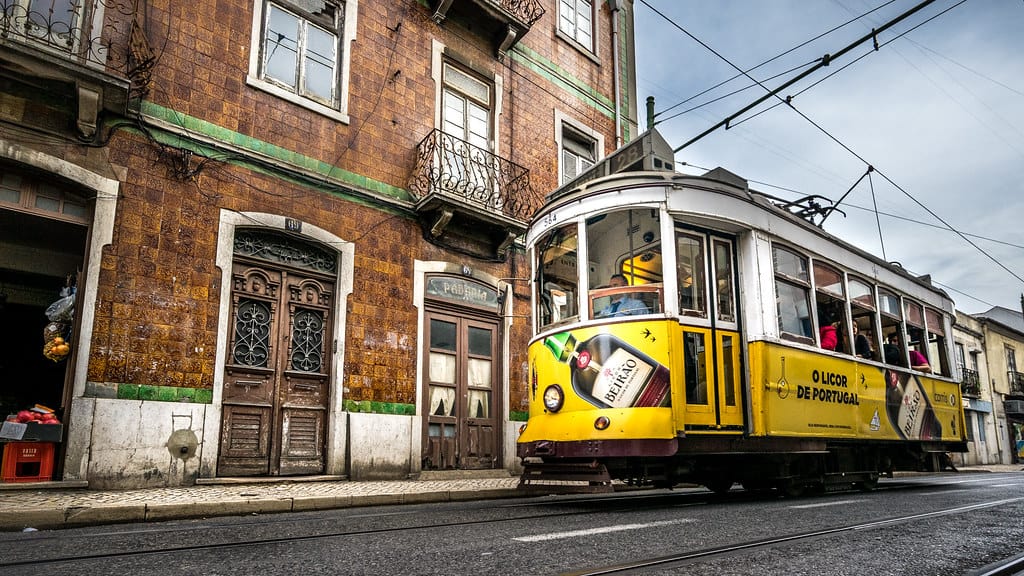
Take a ride on the reputed Tram 28.
One of the things to do in Lisbon that gets the most attention is Tram 28.
You will be transported through the city’s hills and medieval streets on vintage trams that date back to the 1930s.
Presently, it is still in use today as part of the city’s public transportation system.
This will give you the chance to take a brief trip back in time.
When riding in one of these vehicles, you will go right by some of the most visited attractions in the city.
The first electric tram line was inaugurated in 1901. At its peak, the net stretched 145 kilometers and contained 419 automobiles and 100 trailers.
The tram’s role as a mode of public transportation was gradually usurped by the subway and the bus.
The average time between vehicles is 9 to 12 minutes, and the entire trip takes 48 to one hour, depending on the obstacles encountered along the way.
It was not a smooth ride due to the fact that they were built during WWII, but that was part of the allure.
Need more reasons to visit Lisbon, Portugal? Check out why visit Lisbon, Portugal, at least once in your lifetime here.
Address: Praça Martim Moniz 39, 1150-052 Lisboa, Portugal

